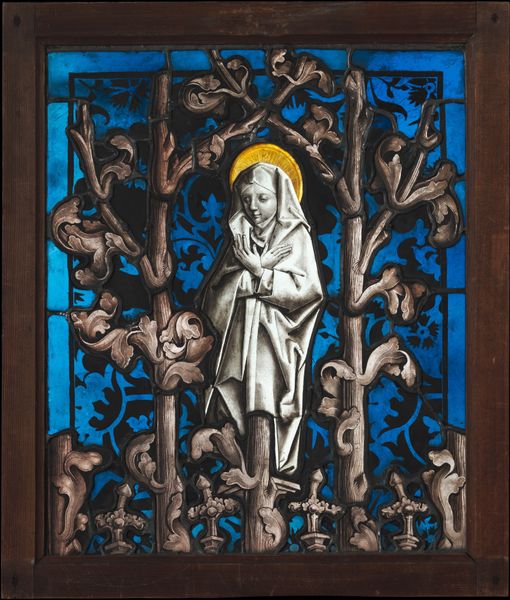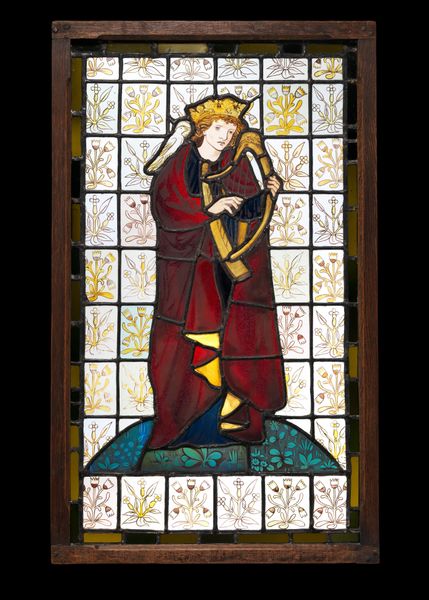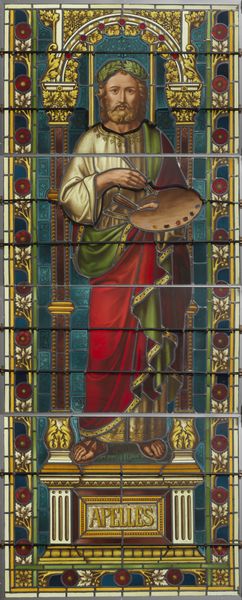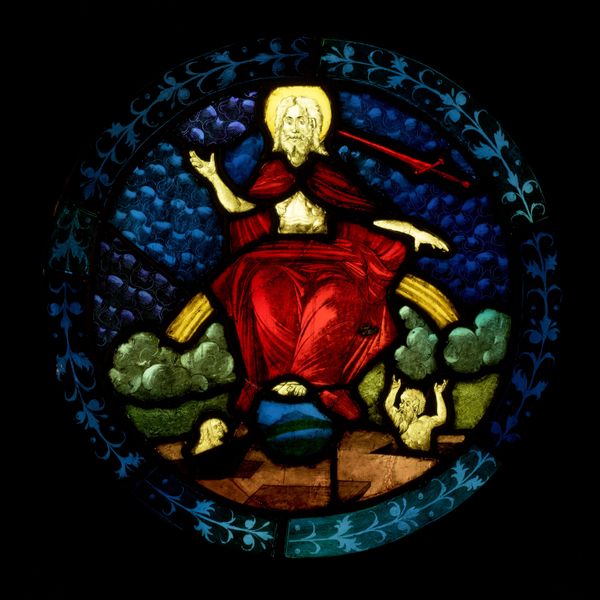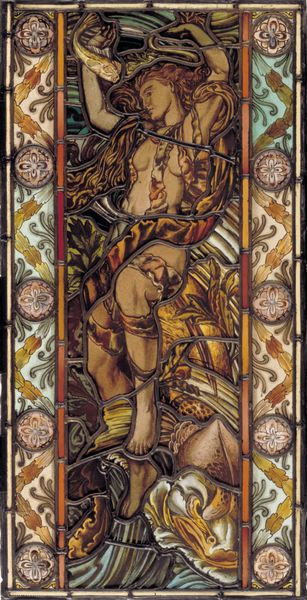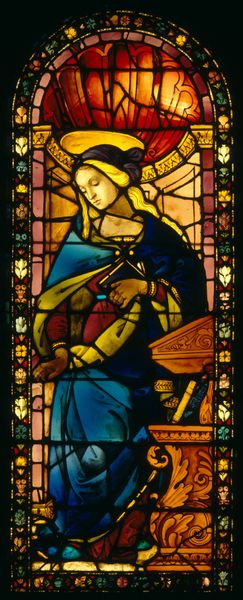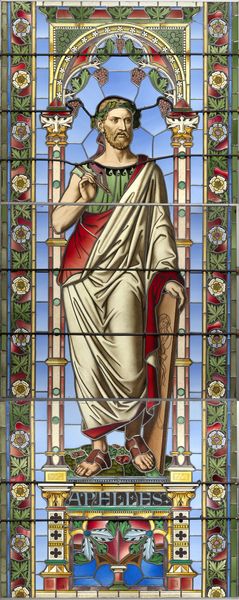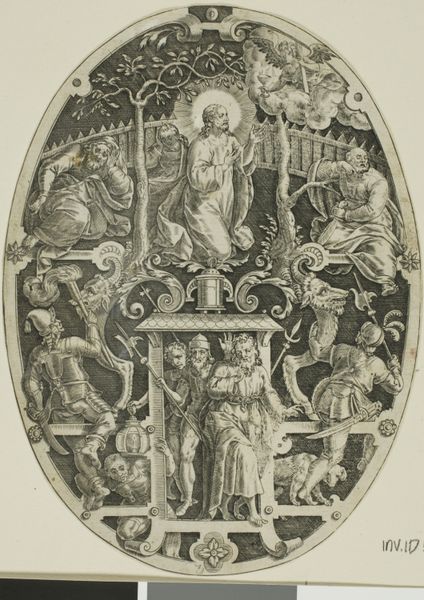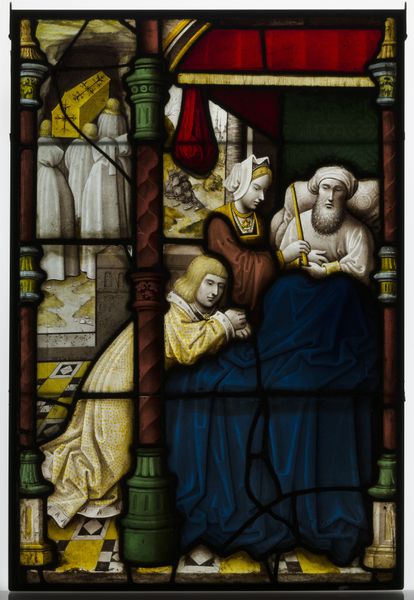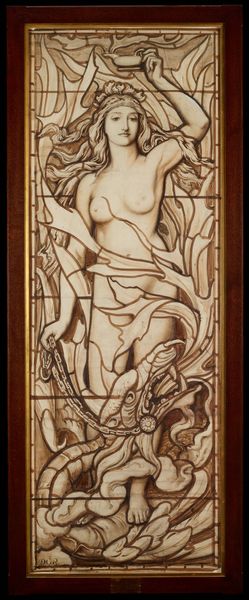
tempera, glass
#
portrait
#
medieval
#
tempera
#
glass
#
history-painting
#
italian-renaissance
#
portrait art
#
christ
Dimensions: 19 1/2 x 16 3/8 in. (49.5 x 41.6 cm)
Copyright: Public Domain
Curator: This arresting panel, "Man of Sorrows," was created around 1480. It’s attributed to the Lautenbach Master and rendered in tempera and glass. You can find it here at the Met. Editor: It’s strikingly…intense. The redness of the robe jumps out against the deep blue, really driving home the suffering aspect. And those ornate borders – they almost seem to cage the figure. Curator: The “Man of Sorrows” is an iconographic type depicting Christ after the Passion, often shown displaying the wounds of his suffering. Placing it within its historical context, we see how this depiction catered to late medieval piety, fostering empathy and identification with Christ's pain. This idea intersects powerfully with concepts of sacrifice, but also of imposed, gendered suffering. Editor: Looking closer, you can see the detailed painting on the glass itself – particularly in the crown of thorns. It must have required incredible skill, layering paint to build up the form and give it depth. You can see clear delineations in color with thin, precise leadlines. I’m curious about the role the glaziers and painters who made it played; these panels often become powerful statements of devotion for everyone who labored over them. Curator: Exactly, and to unpack that further, consider how images like this were used to construct narratives about power and obedience. Christ's suffering becomes a symbol of virtuous submission. We must consider how that message was received and potentially resisted, especially by those marginalized by the very power structures these images helped to reinforce. Editor: Right, but it's not just about institutional power. It is interesting to consider what materials like glass and tempera meant to people back then and how available it would have been to the average community; these resources also became statements unto themselves and lent themselves towards particular artistic messages that connected with popular ideals. Curator: I agree. Thinking about those points certainly adds even more depth. Editor: It’s funny; considering those concepts helps me better appreciate not just what the Lautenbach Master achieved, but how they likely went about achieving it.
Comments
No comments
Be the first to comment and join the conversation on the ultimate creative platform.
